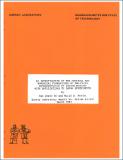An investigation of the physical and numerical foundations of two-fluid representation of sodium boiling with applications to LMFBR experiments
Author(s)
No, Hee Cheon; Kazimi, Mujid S.
DownloadEL_TR_1983_003.pdf (12.29Mb)
Alternative title
Two-fluid representation of sodium boiling with applications to LMFBR experiments, An investigation of the physical and numerical foundations of.
LMFBR experiments, An investigation of the physical and numerical foundations of two-fluid representation of sodium boiling with applications to.
Metadata
Show full item recordAbstract
This work involves the development of physical models for the constitutive relations of a two-fuid, three-dimensional sodium boiling code, THERMIT-6S. The code is equipped with a fluid conduction model, a fuel pin model, and a subassembly wall model suitable for simulating LMFBR transient events. Mathematically rigorous derivations of time-volume averaged conservation equations are used to establish the differential equations of THERMIT-6S. These equations are then discretized in a manner identical to the original THERMIT code. A virtual mass term is incorporated in THERMIT-6S to solve the ill-posed problem. Based on a simplified flow regime, namely cocurrent annular flow, constitutive relations for two-phase flow of sodium are derived. The wall heat transfer coefficient is based on momentum-heat transfer analogy and a logarithmic law for liquid film velocity distribution. A broad literature review is given for two-phase friction factors. It is concluded that entrainment can account for some of the discrepancies in the literature. Mass and energy exchanges are modelled by generalization of the turbulent flux concept. Interfacial drag coefficients are derived for annular flows with entrainment. Code assessment is performed by simulating three experiments for low flow-high power accidents and one experiment for low flow/low power accidents in the LMFBR. While the numerical results for pre-dryout are in good agreement with the data, those for post-dryout reveal the need for improvement of the physical models. The benefits of two-dimensional non-equilibrium representation of sodium boiling are studied.
Date issued
1983Publisher
Cambridge, Mass. : Massachusetts Institute of Technology, Energy Laboratory, 1983
Series/Report no.
Energy Laboratory report (Massachusetts Institute of Technology. Energy Laboratory) no. MIT-EL 83-003.